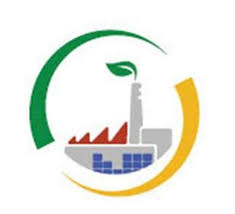 Ethiopian Ministry of Trade and Industry (MoTI) said it plans to collect $9 billion in the next ten years. The Ministry aims to achieve this mainly by increasing the export potential of Ethiopia's manufacturing industry. The Ministry also announced that it aims to make Ethiopia in the top 50 countries in ease of doing business.
Ethiopian Ministry of Trade and Industry (MoTI) said it plans to collect $9 billion in the next ten years. The Ministry aims to achieve this mainly by increasing the export potential of Ethiopia's manufacturing industry. The Ministry also announced that it aims to make Ethiopia in the top 50 countries in ease of doing business.
Shimelis Arega, Senior Communication Expert at MoTI, told the Ethiopian Herald that the ten-year strategic plan includes increasing quality inspection of export and import products from the current 650,000 to 1,058,781 MT (metric tones) and 1,950,000 to 3,485,630 MT respectively by 2022. This will create five million new jobs, he noted.
MoTI's ten-year plan includes raising the share of the manufacturing industry in Ethiopia's economy from 6.8 to 17 percent while increasing the sector's average production capacity from 50 to 85 percent. This will help ensure market competitiveness while benefiting society, Mr. Shimelis insists.
The ten-year plan intends to make use of platforms such as the anticipated AGOA (African Growth and Opportunity Act) encompassing the next five years, which the US has provided for sub-Saharan Africa, the EU’s EBA (Everything But Arms) tax and quota-free market opportunities for developing countries, as well as Generalized Special Preferential trading arrangements with Japan, China, India, and Turkey. On top of this, the African Free Trade Agreement (AFTA) will also help Ethiopia export up to 90 percent of its products to signatory countries without tariffs and quotas in the next ten years.
Regardless, Mr. Shimelis pointed out, due emphasis will be given to "priority products", based computed based on how much demand a product has in the global market, technology requirements to produce it, jobs it is posed to create, and the opportunity of diversity it offers.
To this end, agro-processing, skin and skin effects, textiles and clothing, construction inputs, basic chemical products, pharmaceutical and medical equipment, paper production (pulp production for paper input) and printing, wood products, agricultural inputs (fertilizer and pesticide), plastic / PVC and ICT have been identified as priority product areas for the first five years (2021-2025) of the ten-year plan.
Chemical products, metal and engineering products, manufacturing machines, plastic/ polymer, medical equipment, and electronic manufacturing of various components and products have been selected for the second five years (2026-2030), mainly because these require higher production skills, more resources and infrastructure, as well as high-level of connectivity.
Building a reliable and up-to-date inquiry point information system, developing a research-based marketing chain, improving legal frameworks, and improving modernizing the ease of doing and starting a business have been identified as the main implementation strategies of the plan.
As goals of the manufacturing sector for the ten year period, expanding the manufacturing industries that replace strategic inputs, increasing the number of small and medium-sized manufacturing industries from 2,000 to 11,000, improving the quality of the product, increasing competitiveness, attracting quality investment, and focusing on high-tech industries, have been listed.
The Senior Communication Expert also said, through these efforts as well as others, the Ministry of Trade and Industry "is working ardently" to improve Ethiopia's rating in ease of doing business and place it among the top 50 countries on the scale. Ethiopia currently stands 160th out of 190 countries in ease of doing business.
Shimeles further said that the Ministry is working ardently to improve the country’s ease of doing business through increasing its DB score from 48 to 80 percent, particularly in modernizing the manufacturing industry.
Source: The Ethiopian Herald



